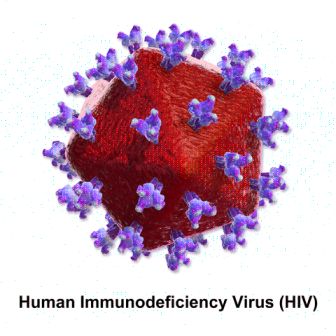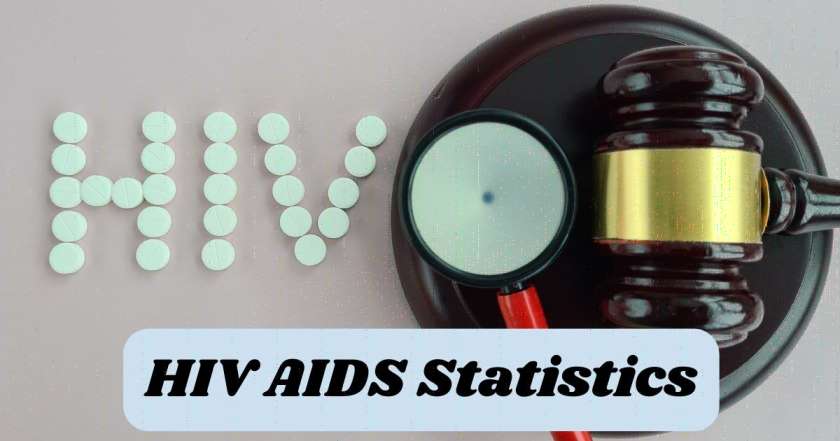What is HIV AIDS?
HIV/AIDS, or Human Immunodeficiency Virus/Acquired Immunodeficiency Syndrome, is a chronic and potentially life-threatening condition caused by the HIV virus. HIV attacks the body’s immune system, specifically targeting CD4 cells, which are crucial for fighting off infections and diseases. As the virus replicates and destroys more CD4 cells, the immune system becomes weakened, making the individual more susceptible to opportunistic infections and certain types of cancers.
AIDS is the most advanced stage of HIV infection, characterized by severe immune system damage and the presence of opportunistic infections or cancers. Without treatment, HIV can progress to AIDS over time. However, with advancements in medical care, including antiretroviral therapy (ART), many people living with HIV can prevent the progression to AIDS and lead long and healthy lives.
HIV is primarily transmitted through unprotected sexual contact, sharing needles or syringes with someone who has HIV, or from mother to child during pregnancy, childbirth, or breastfeeding. While there is no cure for HIV/AIDS, early diagnosis, access to treatment, and prevention methods such as condom use, needle exchange programs, and pre-exposure prophylaxis (PrEP) can help reduce transmission rates and improve quality of life for those living with the virus.

Global HIV AIDS Statistics 2024
| Global HIV AIDS Statistics | Value |
|---|---|
| People living with HIV (2024) | 41 million |
| People living with HIV (2022) | 39 million |
| New HIV Infections (2022) | 1.3 million [1 million–1.7 million] |
| AIDS-related Deaths (2022) | 630,000 [480,000–880,000] |
| People accessing antiretroviral therapy (2022) | 29.8 million |
| Total HIV Infections since start of epidemic | 85.6 million [64.8 million–113.0 million] |
| Total AIDS-related Deaths since start of epidemic | 40.4 million [32.9 million–51.3 million] |
In 2024, the global HIV/AIDS epidemic persisted with an estimated 41 million people living with HIV (39 million in 2022), highlighting the ongoing challenges in prevention and treatment efforts. Despite progress, 1.3 million new infections occurred, with children under 14 accounting for 1.2 million of these cases. AIDS-related illnesses claimed the lives of 630,000 individuals, underscoring the continued urgency in addressing the epidemic. Regional disparities persist, with Eastern and Southern Africa bearing the highest burden. While there have been advancements in prevention and treatment, sustained efforts are needed to scale up access to services and address underlying social determinants of health. Continued investment and political commitment are crucial to achieving global targets and ending the HIV/AIDS epidemic.
HIV/AIDS continues to be a significant global health challenge, affecting millions of individuals worldwide. Understanding the latest statistics from the UNAIDS website provides valuable insights into the current state of the epidemic, progress made, and areas that require further attention. This blog aims to delve into the key statistics surrounding HIV/AIDS, including the number of people living with HIV, access to treatment, new infections, AIDS-related deaths, and specific demographic and key population trends.
New HIV AIDS Infections Statistics
Efforts to reduce new HIV infections have shown promising results, with a 59% reduction since the peak in 1995. In 2022, 1.3 million people were newly infected with HIV, compared to 3.2 million in 1995. Women and girls accounted for 46% of all new infections, indicating the continued vulnerability of this demographic group. Since 2010, there has been a 38% decline in new HIV infections globally, with a particularly notable 58% reduction among children. However, challenges persist, especially in regions with high incidence rates, such as sub-Saharan Africa.
HIV AIDS Deaths Statistics
While AIDS-related deaths have declined significantly since the peak in 2004, approximately 630,000 people died from AIDS-related illnesses in 2022. This represents a 69% reduction since 2004 and a 51% reduction since 2010. The decline in AIDS-related mortality has been observed among both women and men, with a 55% reduction among women and girls and a 47% reduction among men and boys since 2010. Despite progress, AIDS-related deaths remain a significant concern, highlighting the importance of continued investment in treatment and care services.
People Living with HIV
In 2022, there were approximately 39 million people globally living with HIV. This figure represents a wide range, from 33.1 million to 45.7 million, indicating the uncertainty and variability in estimating the prevalence of HIV. Among these individuals, 37.5 million were adults aged 15 years or older, while 1.5 million were children aged 0-14 years. Notably, women and girls accounted for 53% of all people living with HIV, highlighting the gender disparities in HIV prevalence.
Access to Antiretroviral Therapy (ART)
Access to ART is crucial in managing HIV infection and reducing transmission rates. By the end of 2022, 29.8 million people, or 76% of all people living with HIV, were accessing ART, a significant increase from 7.7 million in 2010. However, while 77% of adults aged 15 years and older had access to treatment, only 57% of children aged 0-14 years were receiving ART. Disparities also existed between genders, with 82% of women aged 15 years and older accessing treatment compared to 72% of men in the same age group. Additionally, 82% of pregnant women living with HIV had access to antiretroviral medicines to prevent transmission to their child, emphasizing the importance of prevention of mother-to-child transmission programs. Despite progress, 9.2 million people living with HIV did not have access to ART in 2022, highlighting the need for further efforts to expand treatment coverage.
Demographic Trends
Demographic trends provide valuable insights into the distribution of HIV/AIDS burden among different population groups. In 2022, women and girls accounted for 46% of all new HIV infections globally, with sub-Saharan Africa experiencing particularly high rates of infection among adolescent girls and young women aged 15-24 years. In this region, adolescent girls and young women were more than three times as likely to acquire HIV compared to their male peers. Furthermore, approximately 4,000 adolescent girls and young women became infected with HIV every week globally in 2022, with the majority of these infections occurring in sub-Saharan Africa. Despite the high burden of HIV among adolescent girls and young women, only about 42% of districts with high HIV incidence in sub-Saharan Africa had dedicated prevention programs for this demographic group in 2021, indicating the need for targeted interventions.
Key Populations
Key populations, including sex workers, gay men and other men who have sex with men (MSM), people who inject drugs, transgender persons, and individuals in prisons, face disproportionately high rates of HIV infection. Median HIV prevalence among these populations is significantly higher compared to the general adult population. For example, sex workers have a median HIV prevalence of 2.5%, while transgender persons have a median prevalence of 10.3%. These populations often experience stigma, discrimination, and legal barriers to accessing HIV prevention, treatment, and care services, underscoring the importance of tailored approaches to address their specific needs.
Disclaimer: The data research report provided here is sourced from various channels, aiming for accuracy, but unable to guarantee every detail’s absolute precision. It is intended for informational purposes only, and users are urged to verify critical information independently before making decisions. We are not liable for any financial loss, errors, or damages arising from the use of this information. While our team strives for accuracy, the dynamic nature of data means we cannot verify every fact. Your understanding and discretion are valued.







